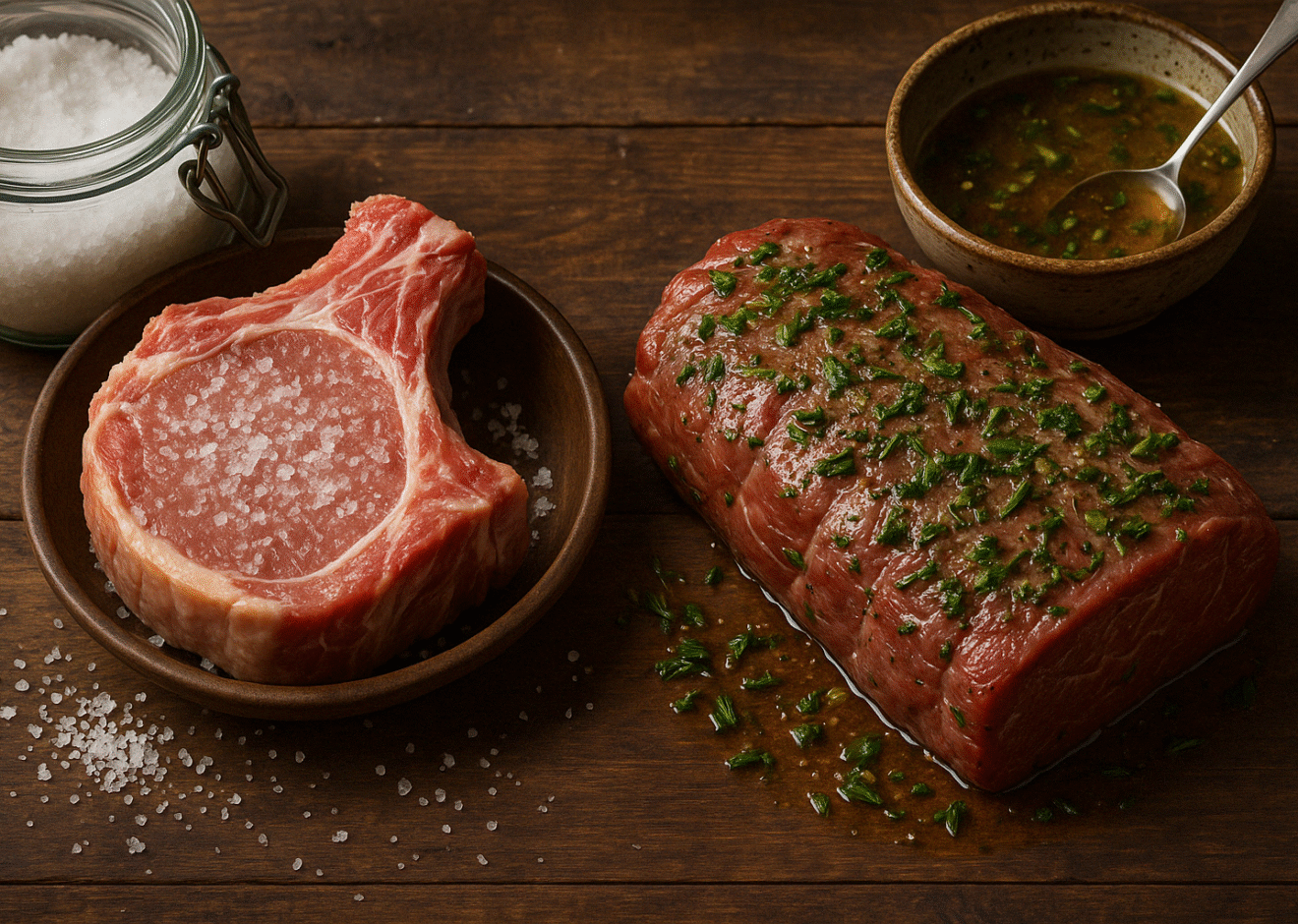
Should you soak your meat in a salty solution or keep it dry and simple? Discover the pros, cons, and best uses of dry brining vs. wet brining for flavor-packed BBQ.
Brining: The Secret to Juicy, Flavorful BBQ
You’ve probably heard of brining—but do you know which method gives the best results? Whether you’re smoking a whole turkey or grilling up some pork chops, the brining technique you choose can make or break the flavor, tenderness, and juiciness of your meat.
Let’s break down the difference between dry brining and wet brining, explore when to use each, and help you decide which method best fits your BBQ game.
What Is Brining?
At its core, brining is the process of adding salt to meat to improve flavor and moisture retention. Salt interacts with the protein structure in the meat, helping it absorb and retain water during the cooking process.
There are two main types:
- Wet Brining: Soaking meat in a saltwater solution.
- Dry Brining: Coating the meat directly with salt (and sometimes other spices).
Dry Brining: Simple and Effective
What It Is:
Dry brining involves rubbing salt (and often other seasonings) directly onto the meat and letting it rest, uncovered, in the fridge for several hours or overnight.
Why It Works:
Salt draws out moisture, then reabsorbs it, carrying seasoning deep into the meat. This enhances flavor without adding excess liquid to the cooking environment.
Best For:
- Steaks
- Chicken (especially skin-on)
- Brisket
- Pork loin
- Turkey (if you’re short on fridge space)
Pros:
- Crispier skin (especially on poultry)
- Less mess
- No special containers needed
- More concentrated flavor
Cons:
- Takes longer than wet brining for thick cuts
- Doesn’t add outside moisture—only retains internal
Wet Brining: Full Flavor Soak
What It Is:
Wet brining involves soaking meat in a solution of water, salt, sugar, and sometimes spices. The salt solution penetrates deep into the meat fibers, increasing moisture and tenderness.
Typical Ratio:
1 cup kosher salt + 1 gallon of water
Best For:
- Whole poultry
- Pork chops
- Ribs
- Seafood (like shrimp or salmon)
Pros:
- Adds significant moisture
- Helps prevent overcooking
- Easy to add aromatics (peppercorns, garlic, citrus, herbs)
Cons:
- Requires large containers and fridge space
- Can make skin soggy
- Diluted flavor compared to dry brine
Which One Should You Use?
It really comes down to the meat you’re cooking and the result you’re after.
| Meat Type | Best Brine Method | Why |
| Whole Chicken | Dry or Wet | Dry for crispy skin, wet for juiciness |
| Brisket | Dry | Enhances beefy flavor and bark |
| Pork Chops | Wet | Helps retain moisture during grilling |
| Turkey | Dry (for skin) | Wet (for moisture) — personal preference |
| Ribs | Wet (quick soak) | Adds flavor and helps tenderize |
Final Verdict
If you’re short on time and fridge space, dry brining is the way to go. It’s cleaner, easier, and creates incredible flavor, especially on red meat and poultry with skin. If you want ultra-juicy meat and don’t mind the extra cleanup, wet brining can be worth the effort—especially for leaner cuts.
Buy Here: Top Brining Tools You’ll Want in Your BBQ Arsenal
Take your meat prep to the next level with these trending Amazon products tailored for both dry and wet brining.
- Curing & Brining Salt (Morton’s Kosher Salt)
Trusted brand with the perfect crystal size for penetration.
https://amzn.to/43Rx70D - PrepWorks Brining Container with Locking Lid (22 qt)
Ideal for brining whole turkeys, pork shoulders, or chicken.
https://amzn.to/4jcAmEv - Dry Brining Wire Rack & Tray Combo
Keeps airflow under meat to help crisp the skin during fridge rest.
https://amzn.to/3YzWCjn - Briner Bucket Jr. with Locking Plate
No floaters here—this bucket locks the meat in place and seals tight.
https://amzn.to/3Y2tUrm - Vacuum Seal Marinator by FoodSaver
Get brine penetration fast. A great shortcut for last-minute cooks.
https://amzn.to/4lwYUK4
